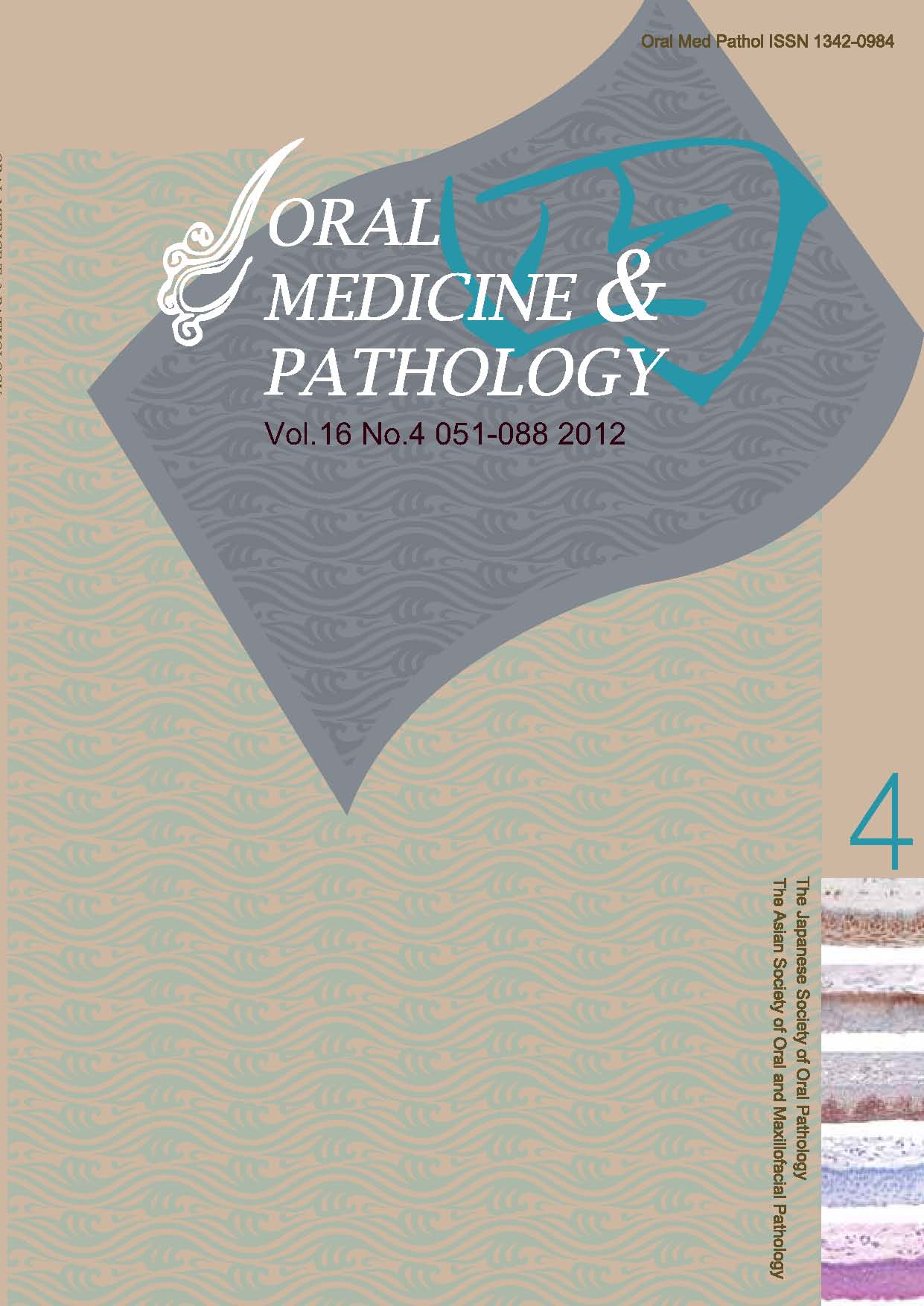Sialyl Lewis
a (CA19-9 antigen), a high molecular weight glycoprotein, was originally described as a gastrointestinal tract- and pancreas-specific tumor marker. However, the diagnostic usefulness of sialyl Lewis
a expression in salivary gland tumors is not well established. Therefore, we examined the diagnostic significance of sialyl Lewis
a (CA19-9 antigen) expression in salivary gland tumors. Surgical materials, consisting of 30 benign (20 pleomorphic adenomas, 5 basal cell adenomas, 5 myoepitheliomas) and 30 malignant (13 mucoepidermoid carcinomas, 13 adenoid cystic carcinomas, 4 salivary duct carcinomas) salivary gland tumors, were subjected to examination in this study. To measure expression of sialyl Lewis
a in these tumors, a streptavidin-biotinyl immunoperoxidase method was performed using anti-human CA19-9 antibody. There was a tendency for malignant salivary gland tumors, to express sialyl Lewis
a more intensely than benign tumor (P<0.05). As the expression pattern is generally characterized by localization in relatively highly differentiated malignant cells such as mucous-producing cells and atypical luminal duct cells, poorly differentiated tumors such as adenoid cystic carcinoma solid type and salivary duct carcinoma are consistently shown to express sialyl Lewis
a less frequently. Five (tubular type 2 and cribriform type 3) of 13 (38.5%) cases were stroma positive for sialyl Lewis
a in the adenoid cystic carcinoma. Sialyl Lewis
a expression appears to be increased by the malignant transformation of salivary gland tumors. The clinical applications of sialyl Lewis
a in patients with salivary gland tumors may be worth examining more closely in the future.
抄録全体を表示
